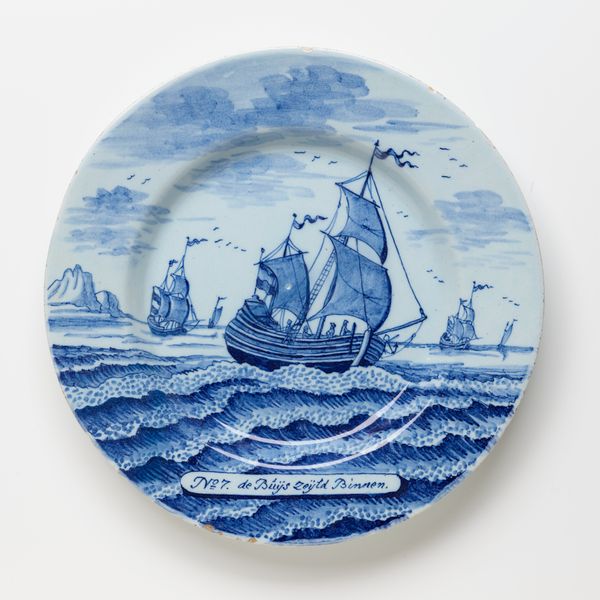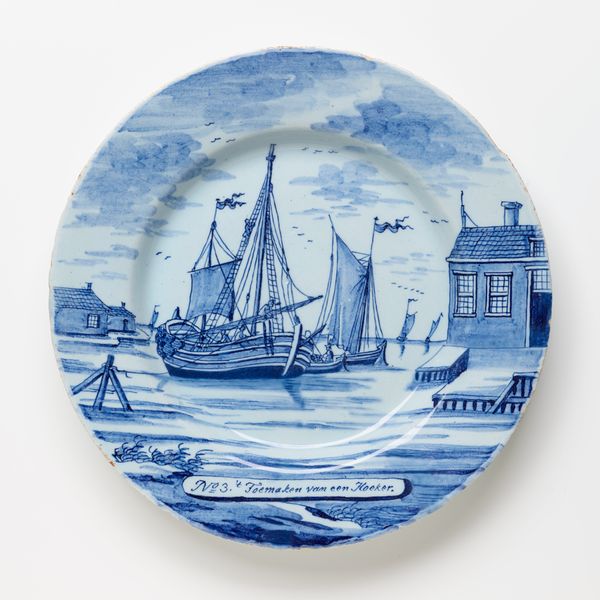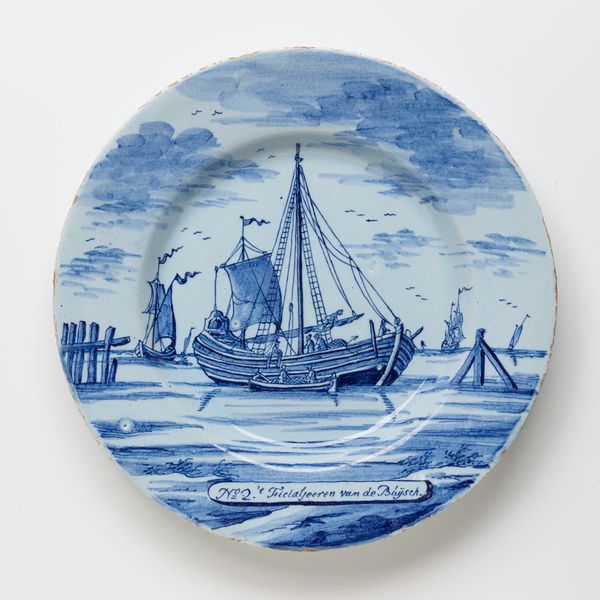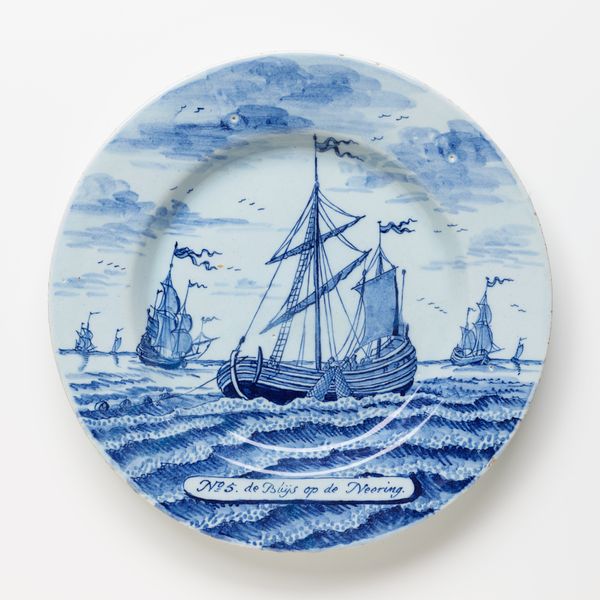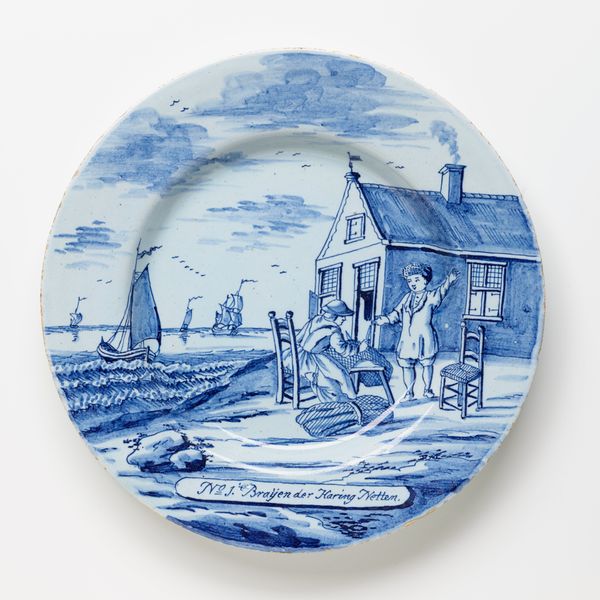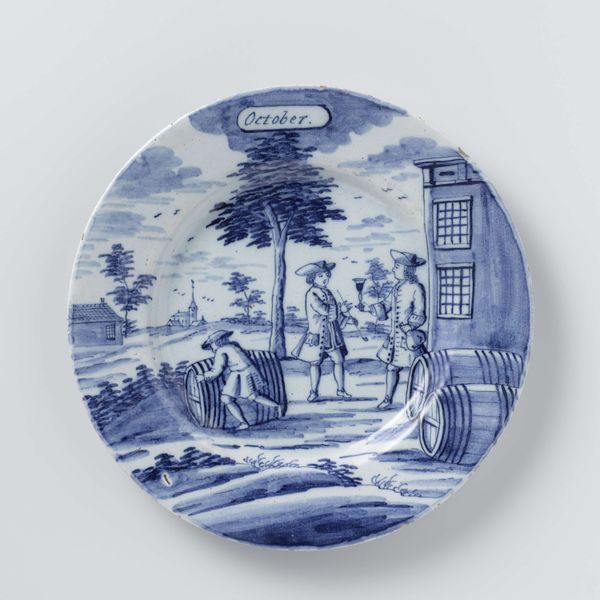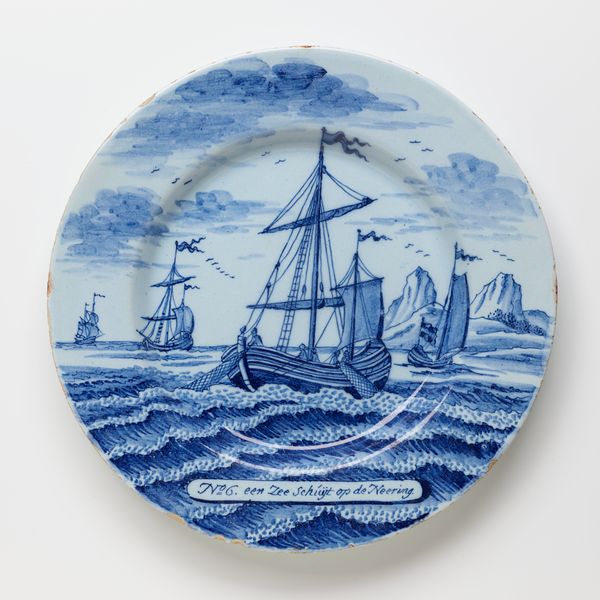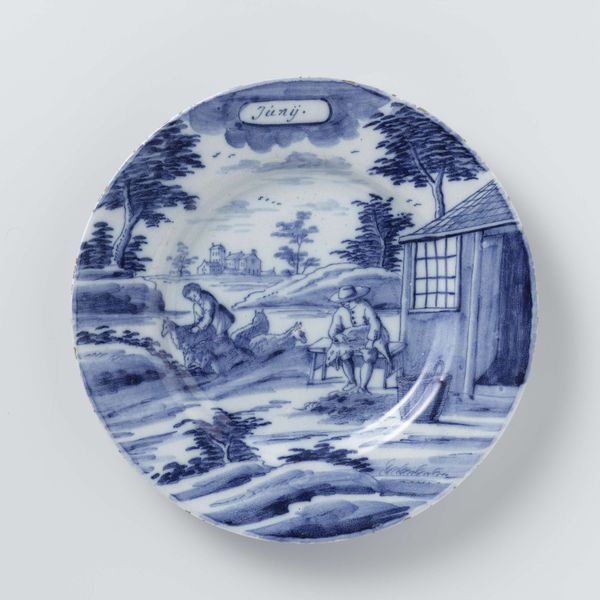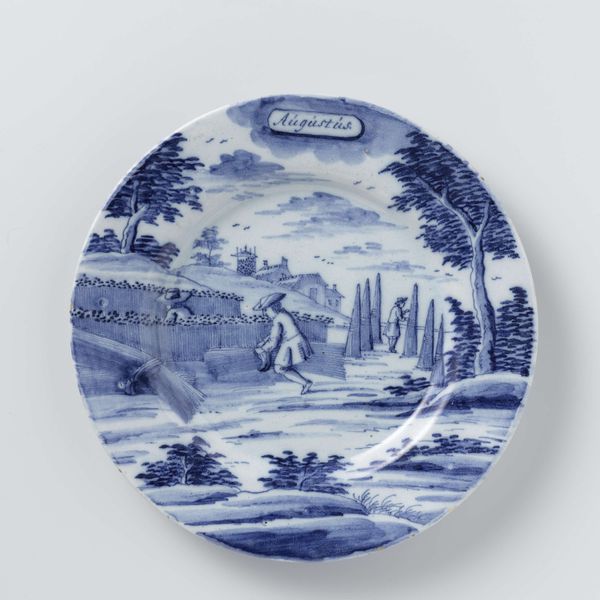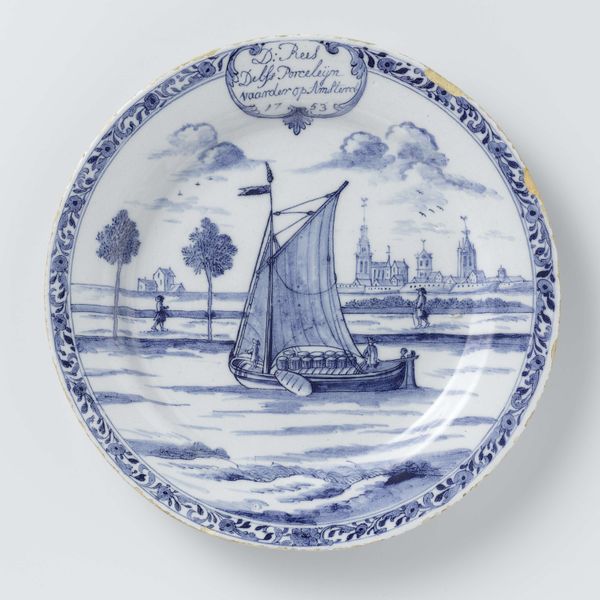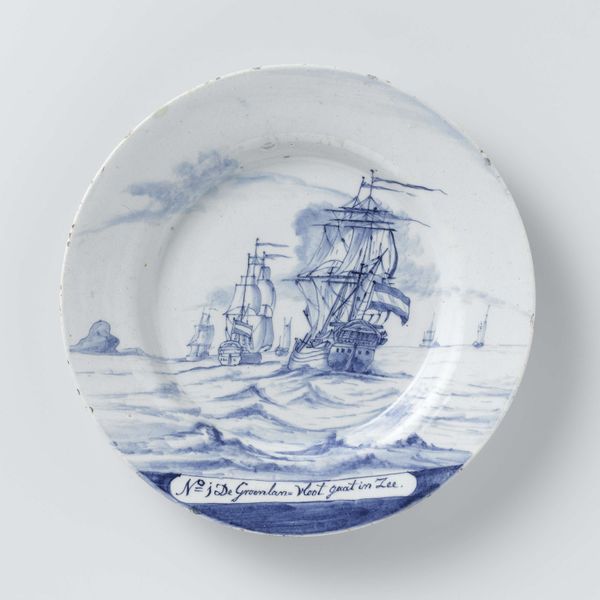
ceramic, earthenware
#
dutch-golden-age
#
blue and white
#
ceramic
#
figuration
#
earthenware
#
earthenware
#
genre-painting
Dimensions: 1 × 9 × 9 in. (2.54 × 22.86 × 22.86 cm)
Copyright: Public Domain
Editor: So, here we have "No. 10," a ceramic earthenware plate made around 1780 by the Porcelain Axe Factory. The blue and white scene shows figures working by a boat. It’s incredibly detailed for something meant to be… dinnerware. I’m really curious about its cultural relevance, it feels very intentional. What symbols or stories do you think are embedded in this piece? Curator: The imagery speaks volumes about Dutch life at the time. Note the prominence of the ship and barrels. Can you guess what product these workers are dealing with? The text at the bottom offers a hint. Editor: It looks like the text says "verpakte der Haring," so... herring? Are they packing herring? Curator: Precisely. Herring was a staple, fueling the Dutch Golden Age. This plate, then, isn't merely decorative; it’s a celebration of Dutch maritime trade and industry. Blue and white porcelain, especially in this period, held symbolic weight connected to wealth and global exchange routes. These weren’t your average dinner plates. The figuration acts almost like a coat-of-arms. It transmits cultural memory and values. Do you think knowing this affects your interpretation? Editor: Definitely! Seeing it as a representation of the economy rather than just a genre scene… it emphasizes the connection between art and cultural identity. It feels like a way to record everyday moments and elevate them to something… symbolic. Curator: It reveals a conscious effort to cement a cultural narrative. By memorializing herring production on such fine wares, the plate shows the Dutch valued industry and commercial spirit. That this kind of imagery appears on tableware signals a profound connection between self and commerce. Editor: I would have never guessed how much history and symbolic meaning could be found on a plate. This has given me a whole new appreciation for Dutch Golden Age art.
Comments
minneapolisinstituteofart about 2 years ago
⋮
This series of twelve plates is painted with scenes related to fishing for herring. While undistinguished in appearance, this silver fish was an abundant source of food in the North Sea and supported a vast fishing industry in the Netherlands. Herring fishing accounted for such a large percentage of the wealth of the Dutch Republic that Amsterdam was said to have been built on herring bones.
Join the conversation
Join millions of artists and users on Artera today and experience the ultimate creative platform.
